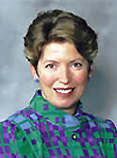Faculty
Jeanne E. Gose, M.D., Ph.D.
Specialty: Allergy
North Shore Medical Center
114 R Highland Avenue
Salem, MA 01970
Publications
The following is a list of recent publications for which this Partners Asthma Center physician has been cited as an author in PubMed databases. Study abstracts have been provided for your convenience.
Gose, J. E. and F. H. Bach (1981). "Rejection crises that resolve can be triggered by passenger cells in otherwise syngeneic transplants." Transplant Proc 13(1 Pt 2): 1117-9.
Bach, F. H. and J. E. Gose (1981). "Cellular basis of allograft rejection." Transplant Proc 13(1 Pt 2): 1063-7.
Gose, J. E. and F. H. Bach (1979). "H-2 I-region encoded targets in allograft rejection." J Exp Med 149(5): 1254-9.
Fresh thyroids transplanted to I-region disparate recipients are, in most cases, rejected; in some instances fresh thyroids undergo periods of crisis followed by functional recovery. Cultured thyroids that are taken from donor animals pretreated with lymphocytotoxic drugs, gamma radiation and cultured for 10 d in vitro are not rejected by any normal allogenic recipient. If the recipient is sensitized with lymphoid cells syngeneic with an I-region disparate cultured thyroid donor, the cultured thyroid is rejected if I-A-subregion differences are included. We interpret these data to indicate that there exist I-region encoded perenchymal cell target determinants which are not, by themselves, immunogenic.
Bernstein, A., M. L. Sopori, et al. (1979). "Modulation of immune response by alloactivated suppressor T cells." Transplant Proc 11(1): 997-1001.
Bach, F. H., J. E. Gose, et al. (1979). "Past, present, and future aspects of histocompatibility." Transplant Proc 11(1): 1207-11.
We have stressed problems attendant on studies of the MHC, ignoring non-HLA factors and their role in allograft immunity. Many other topics could have been chosen for discussion is any such overview; our selection reflects our own interests. We felt assured, however, that excellent coverage by our many colleagues of the diverse and varied aspects of histocompatibility not approached in this summary has allowed us this freedom.

